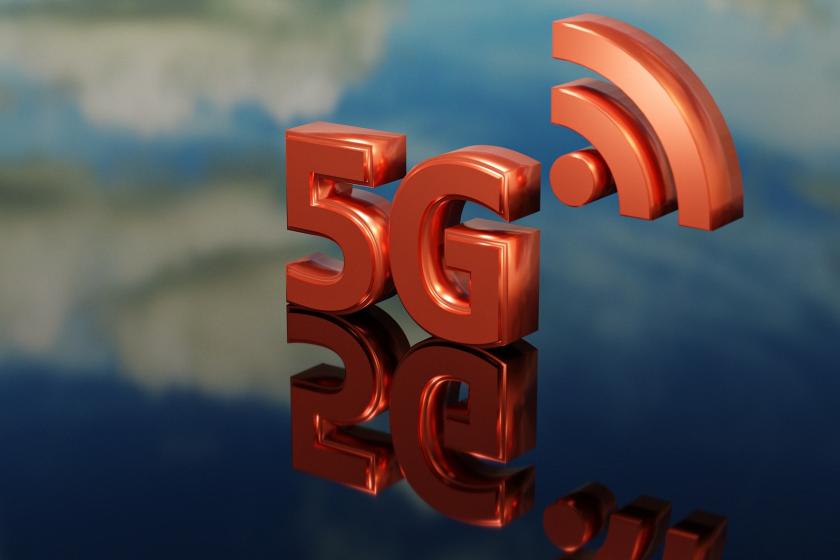5G Presents Hidden Sustainability Opportunity
Large venues can piggyback on their in-building 5G network upgrade projects to reduce their carbon footprints. Here’s how.

As sustainability initiatives gather steam, IT teams are being asked to find ways to contribute to their organizations’ CO2-reduction efforts. Some are unsure what measures to take to make a difference.
Though they may not realize it, those planning to upgrade their in-building cellular systems to 5G face a unique opportunity to lower their emissions. As they modernize their systems, they can capitalize on distributed antenna system (DAS) technology advances to shrink their wireless network equipment footprints and slash in-building wireless power and cooling consumption.
An Industry in Transition
For large venues that serve the public, such as stadiums, airports, casinos, and hotels, delivering reliable mobile communications to densely packed crowds has become competitive table stakes. As the world’s mobile network operators ramp up their 5G macro network rollouts, 5G is also becoming the gold standard that venue visitors expect for watching sports replays, ordering concessions and merchandise, accessing travel information, and countless other types of dynamic communication.
Venues and mobile network operators heavily invest in DAS infrastructure to improve cellular performance. An extensive cabled network of RF antennas and equipment throughout the venue repeats and/or amplifies cellular signals from licensed macro networks to reach highly distributed visitors, employees, and vendors. But while DAS is a pivotal technology for immersive guest experiences, most existing installations are no longer as efficient as they could be.
Conventional deployments require specialized equipment to perform analog-to-digital-to-analog conversions along the network path between each mobile carrier’s cellular signal source and the venue’s distributed antennas. This equipment consumes significant power, cooling, and real estate, wasting energy and increasing greenhouse gas emissions.
The Efficiencies of Going Digital
Enter the digital DAS, which collapses analog-digital conversions into simple digital interfaces that eliminate large volumes of headend radio equipment. These systems can free up as much as 90% of floor space—which venues can redeploy and monetize—and reduce DAS energy consumption and cooling power by at least half. Moreover, the digital DAS replaces multiple coaxial cable runs used to connect analog DAS components with standard single-mode fiber, reducing up to 89% of cabling throughout the venue.
The sustainability impact of digital DAS can be seen in the NFL’s largest stadium, which was reaching the performance limits of its conventional in-building system around the time the pandemic hit. The Dallas Cowboys’ AT&T Stadium chose to deploy a digital DAS during the 2020 lockdown to support new gigabit-speed AT&T 5G in-building coverage.
While it wasn’t focused on sustainability at the time, the stadium ended up with a win-win, according to Matt Messick, Dallas Cowboys CIO. “We increased in-building network performance 10-fold, with a second-to-none performance experience for fans,” he said. At the same time, the stadium reduced power consumption by about 87% and cooling consumption by about 75%.
For example, the stadium needed only five equipment racks, compared to the 30 to 40 racks required for an analog DAS, a reduction of about 88%. The stadium got back 5,000 square feet of space that it can now monetize in new ways.
Piece of the Sustainability Puzzle
Many organizations face conservation and sustainability objectives that range from alleviating the environmental effects of greenhouse gases to attaining the cost, operational, and real estate efficiencies needed for future viability. New network designs using digital technologies and software that reduce energy consumption throughout a system’s lifecycle help them meet these goals. Newer digital systems are more efficient than conventional DAS technology, collapsing functions into fewer devices that require far less floor space and energy. In this way, digital DAS can be compared to other computing trends, such as resource virtualization and hyperconverged infrastructure.
“If you’re doing a digital transformation, why would you deploy an analog DAS?” said Dallas Cowboys’ Messick.
For venues with in-building wireless systems, DAS migration to 5G presents a unique sustainability opportunity. Where significant DAS infrastructure is needed, cutting real estate requirements by up to 90% and power/cooling consumption by more than half is a significant contributor towards reducing a business’s overall carbon emissions and attaining the operational and cost efficiencies needed for long-term viability.
About the Author
You May Also Like





